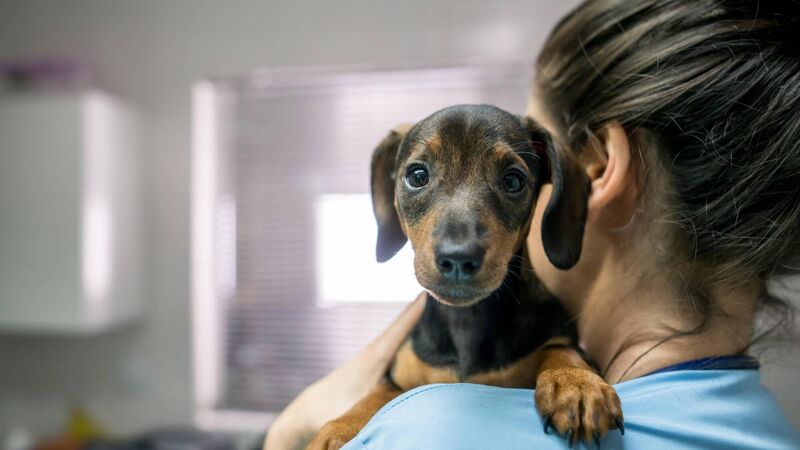Vets deal with patients' deaths five times more than doctors — that takes its toll

Pete the Vet: Burnout is a common issue in many careers, but in springtime especially, spare a thought for your pressurised vet.
Springtime is the busiest time of year for vets: the normal daily workload of clinical cases is supplemented by the seasonal surge of calvings and lambings (most young animals are born in the spring). Vets are often called after-hours to help when cattle and sheep get into difficulty. Caesarian sections commonly need to be done at night or in the early hours of the morning, and vets usually have to carry on with the normal working routine the following day. It’s no wonder that many vets are frazzled and less chatty than normal at this time of year.
In the past, this was just a seasonal issue: vets knew that they’d be hectically busy from March to May, but the pressure was offset by a slower pace of work in the summer and at other times of year.
The growth of companion animals - dogs and cats mostly - ownership in Ireland since the start of the pandemic means that for many vet clinics across the country, the spring peak has extended, so that now vet clinics are running at full steam all year round: there is no quiet time to recover. Pet owners may have noticed that they need to book appointments days or weeks ahead,, whereas in the past they would be seen the same day.
The talk in the veterinary world is about “vet burnout”: many vets are finding it difficult to sustain their enthusiasm and enjoyment of a career which places them under continual intense pressure. It’s now common for vets to choose to work shorter weeks (eg three days), to take career breaks, or even to leave the profession entirely. I know vets who have become landscape gardeners, artists and teachers, and they say the sense of relief at escaping the pressure of vet work is immense.
The issue of burnout is compounded by a shortage of vets: every month, the veterinary magazine classified sections advertise over forty vacancies with very few applicants. There are stories of clinics taking many months to find replacements for vets who have resigned. This means that many vet clinics are running on lower vet numbers, which aggravates the pressure facing those vets still in the workplace. The COVID situation has also made things worse, with many clinics having up to 50% of their staff signed off at one time after testing positive for the virus in recent months.
Another factor that is discussed in the veterinary community is the altered gender balance in the profession. Sixty years ago, 95% of vets were male. Thirty years ago, the split was 50:50 male to female. These days, the output of new graduates from veterinary college is 80% female, 20% male. And the fact is, female vets are more likely than male vets to take extended maternity leave to care for their children, and they are also less likely to return full time to the workplace. Of course, this is not an absolute rule: either gender can choose parental leave. But in our contemporary culture, the role of the main carer still tends to fall on mothers more than fathers.
This burnout of vets is a global issue: across Europe, UK, USA and Australasia, there’s a shortage of vets, and those left in full-time work are often looking for alternative careers.
Interviews with vets feeling unhappy with their career often report three aspects that trouble them, on top of the shortage of vets.
First, vets often feel internal angst after repeated exposure to emotionally charged situations such as gravely ill pets, euthanasias, and end of life traumas. The life of a pet is only around 20% as long as a human life (a dog or cat might live 15 years, compared to a human’s 75 years plus). This means that vets experience the death of their patients around five times more often than medical doctors. Pet owners these days see their pets as part of the family, experiencing severe distress or grief when their pets fall ill or die. We vets do our best to support owners at these difficult times, and this can create an emotional challenge, especially for vets of a sensitive nature.
Second, vets often report that they find it difficult to meet the high expectations from pet owners who may have insufficient resources to fund those expectations. Veterinary care, at the highest level, can be as pricey as human medical care. Yet owners are often not in a position to pay the thousands of euro that may be needed to help their ailing animals. Vets find themselves caught in the middle: wanting to help the animals, but having to deal with financial constraints.
What can pet owners to do avoid adding to the issue of vet burnout?
1) When arranging to visit your vet, ask how long the appointment time is: the longer the slot, the less likely the vet is to feel under high pressure.
2) Take out pet insurance, so that you are certain to have sufficient resources to fund the best possible care for your pet: this will remove the aspect of financial stress when dealing with your veterinarian.
3) Be kind. One of the biggest stresses to vets under pressure is pet owners who are unreasonable, angry or just plain mean. This includes face to face interactions, but also social media engagements. Say thank you to your vet afterwards online, give a positive review, or do something else to counter the negativity that can adversely affect vets.

Celebrating 25 years of health and wellbeing







